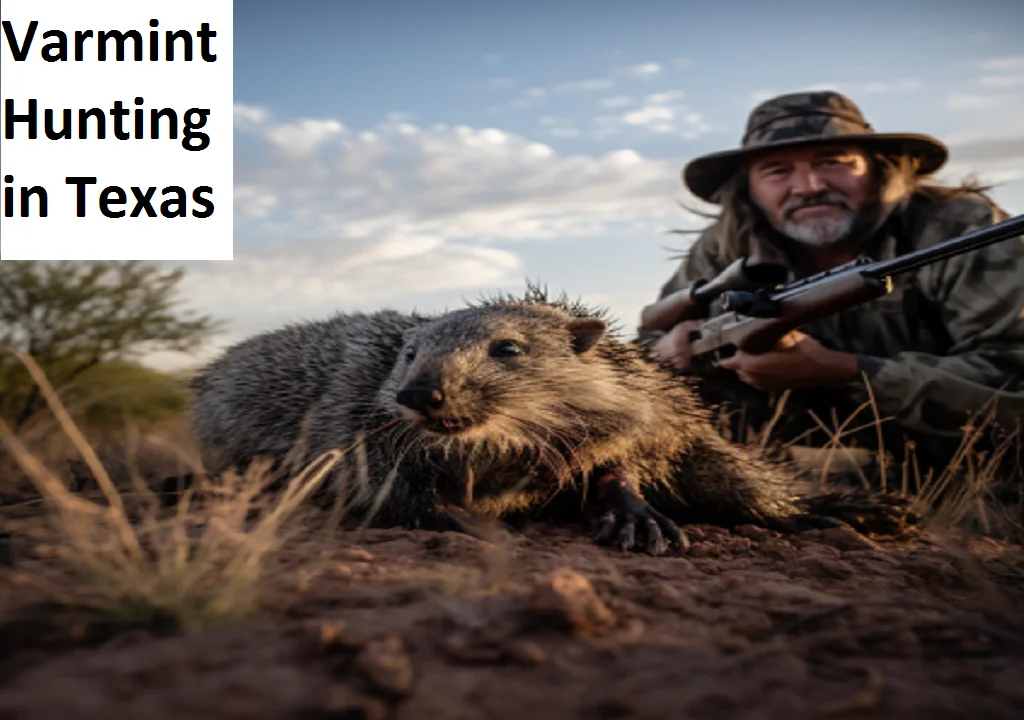
Vast, sprawling, and diverse, Texas’s landscapes have been a sanctuary for hunters and wildlife enthusiasts for ages. Among the myriad activities one can pursue here, varmint hunting stands out as both a tradition and an essential tool for managing certain wildlife populations.
Table of Contents
At its core, a varmint is essentially a wild animal considered detrimental, either due to its potential to cause damage or spread diseases. From the burrowing prairie dogs to the stealthy coyotes and the invasive feral hogs, Texas has its fair share.
Varmints have earned their reputation primarily due to their large numbers and the havoc they wreak. This can range from garden and crop destruction to preying on livestock, leading to substantial economic losses.
Varmints, by nature, are elusive. Their smaller stature combined with agile movements presents a challenge that many hunters find irresistible.
Hunting varmints is not just a sport; it’s a tool. By keeping certain populations in check, hunters aid in maintaining a balance in the ecosystem and minimizing damages.
Varmint rifles, unlike standard hunting rifles, are crafted for accuracy over longer distances. With varmints being smaller targets, a miss could mean a lost opportunity.
A good spotting scope magnifies the distant lands, enabling hunters to identify and track their quarry even before taking the shot.
To be successful, a hunter must become part of the landscape. Camouflage clothing, combined with realistic calls, can turn the tables in the hunter’s favor.
Regardless of an animal’s “pest” status, the approach should always be respectful. Quick, clean kills minimize suffering.
Texas has an intricate web of hunting laws. Knowing them is crucial, not only for ethical reasons but also for ensuring the sustainability of the sport.
Coyotes, with their keen senses, are a challenging hunt. Their pelts, however, are valuable, making them a prime target.
Prairie dogs might seem innocuous, but their burrowing can compromise large tracts of land. Moreover, their quick reflexes make them challenging targets.
Not native to Texas, feral hogs have proliferated exponentially. Their foraging habits can devastate vast stretches of agricultural lands, making them a major concern.
By delving into the preferred habitats, behaviors, and habits of varmints, one can significantly enhance their success rates.
In hunting, sometimes the wait can be longer than the action. A comfortable perch and patience can make all the difference.
From firearm safety to being wary of the terrains and potential threats (like snakes), safety should always be a hunter’s top concern.
With hunters flocking to Texas from various regions, local businesses, especially those in rural areas, witness a surge in revenue.
Hunting generates a demand for guides, gear shops, and lodging, providing ample employment opportunities.
While hunting helps control populations, over-hunting can tip the balance. It’s crucial to find the sweet spot.
As with many hunting practices, varmint hunting has its proponents and detractors. Understanding their concerns is vital for a meaningful dialogue.
In Texas, there are numerous hunting clubs and associations. Furthermore, joining them can provide invaluable insights and, additionally, foster a sense of camaraderie.
Online forums, social media groups, and apps dedicated to hunting can be treasure troves of information and community-building tools.
The tapestry of varmint hunting in Texas is rich and multifaceted. It’s a blend of tradition, necessity, and passion. And as with any pursuit, the key lies in understanding, respect, and balance.
Q1: Are night hunts for varmints allowed in Texas?
A: Yes, certain varmints can be hunted at night, but specific regulations apply, and permissions might be required.
Q2: How does the introduction of new species impact varmint populations?
A: New species can either compete with or prey on varmints, affecting their numbers and behavior.
Q3: What’s the economic damage caused by varmints annually in Texas?
A: The numbers fluctuate, but damages, especially from feral hogs, can run into millions.
Q4: How do local farmers and ranchers view varmint hunting?
A: Many see it as a necessary tool to protect their lands and livelihoods, though opinions vary.
Q5: Are there specific techniques to hunt each varmint?
A: Yes, techniques can vary based on the animal, its behavior, and the terrain. Research and guidance from seasoned hunters can be invaluable.
Hunting isn’t just a sport it’s a legacy of stewardship, respect for nature, and hands-on…
If you’re new to hunting or target shooting, choosing the right rifle scope can feel…
If you're out bowhunting, you know that estimating yardage isn’t just helpful it’s essential. A…
Table of Contents Introduction Gun ownership laws and regulations in the United States vary from…
For hunters and shooting enthusiasts, having a secure and organized way to transport firearms is…
When the hunting season approaches, every serious bowhunter knows: your bow isn’t just gear it’s…
This website uses cookies.